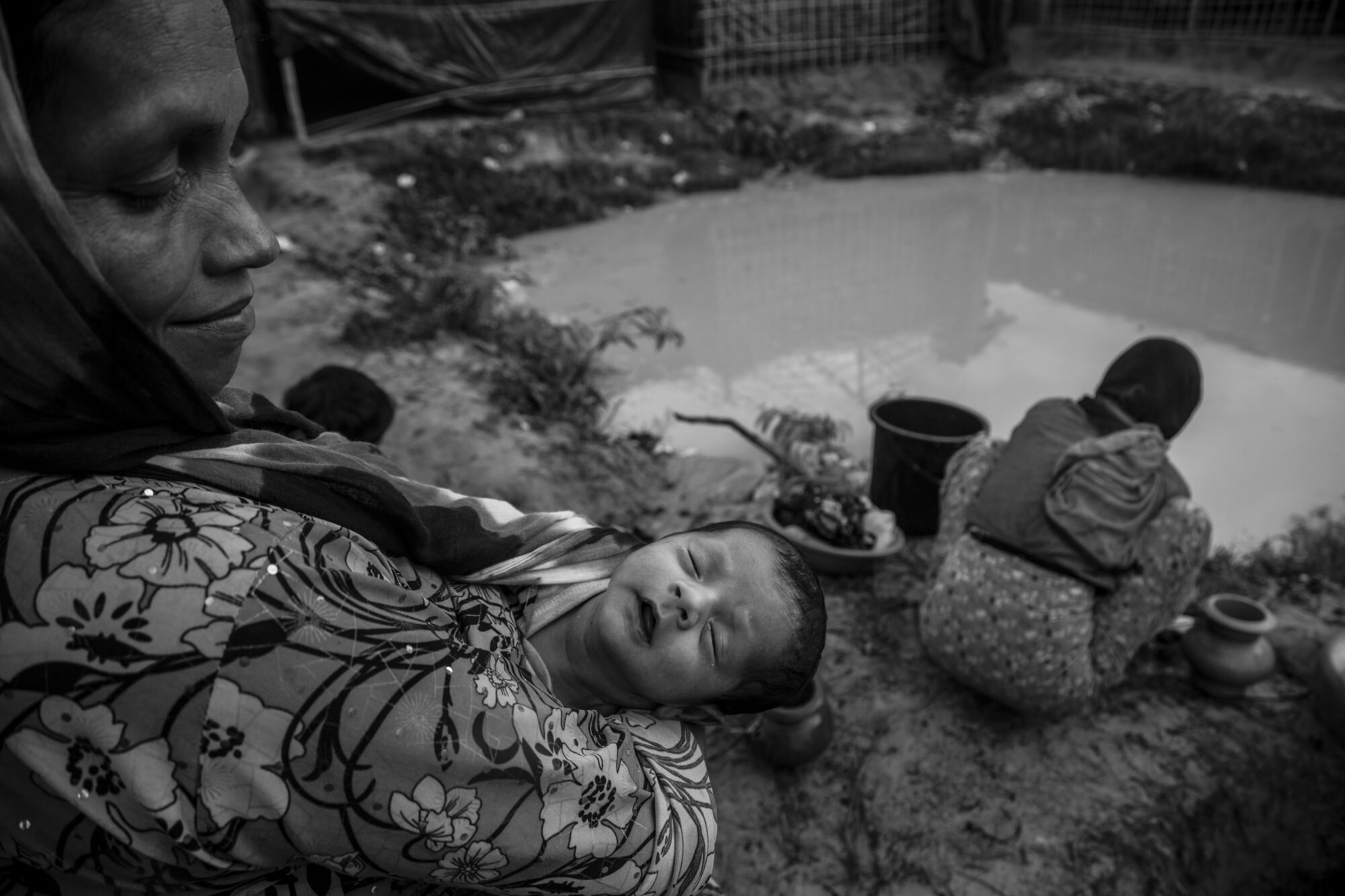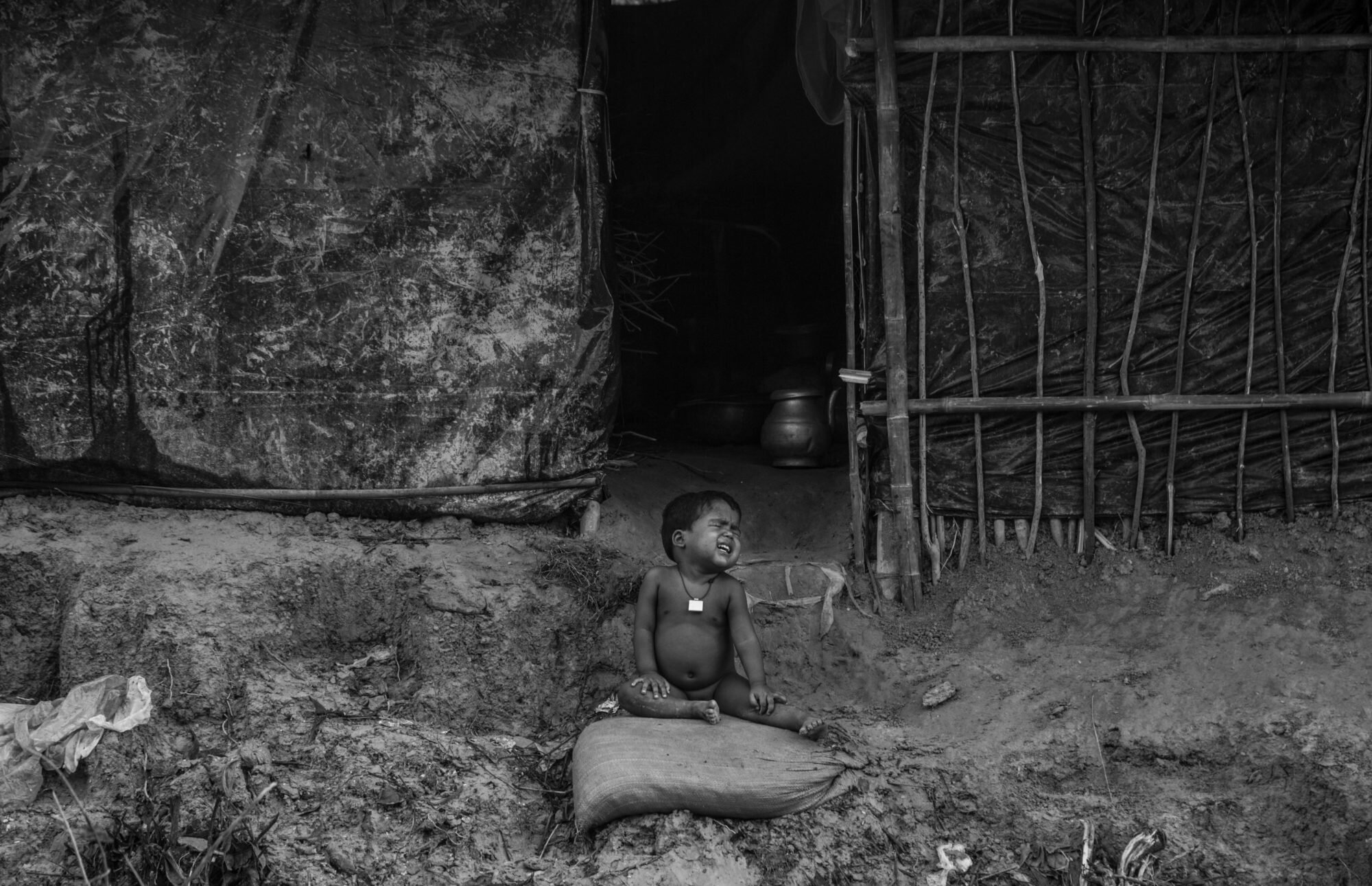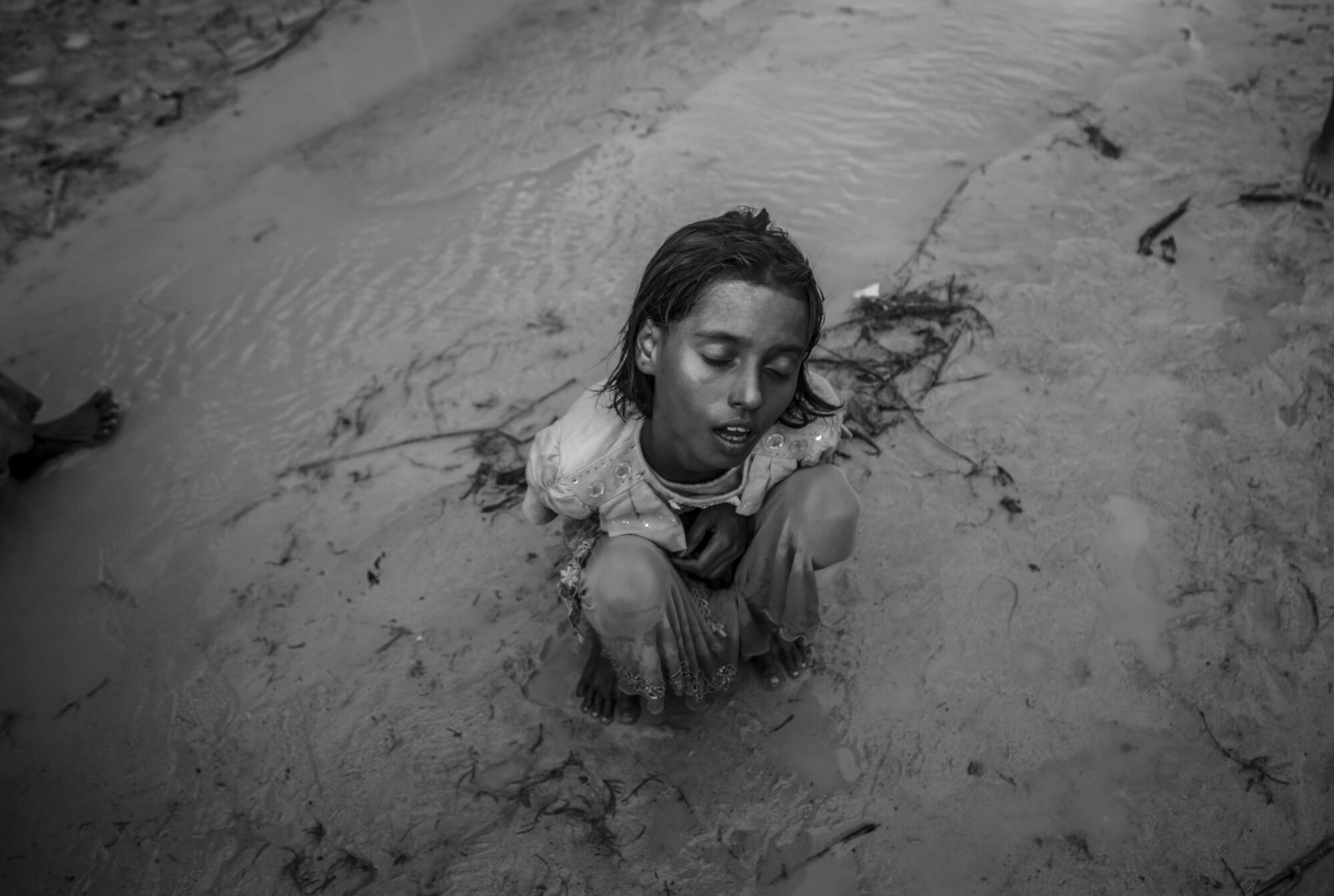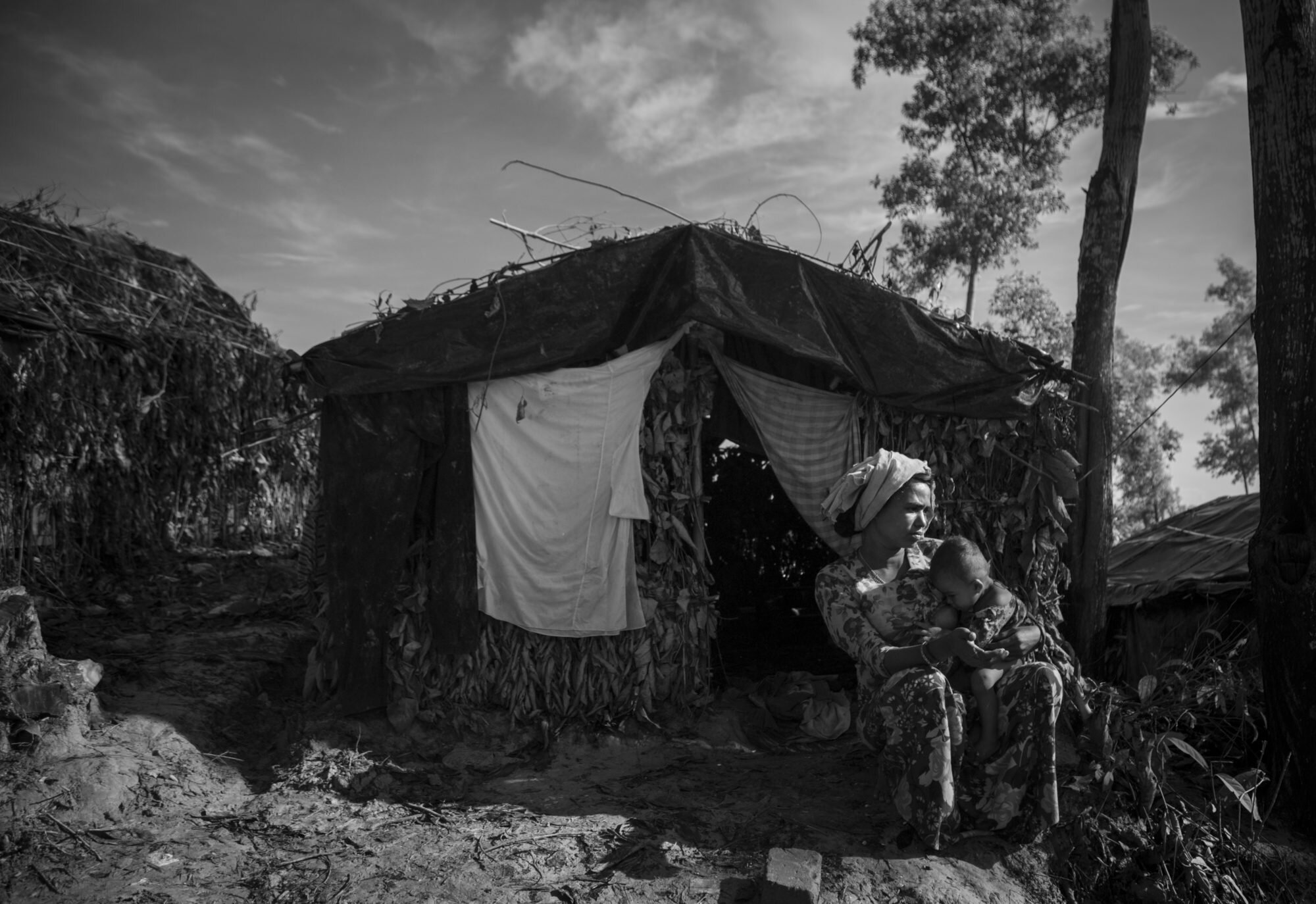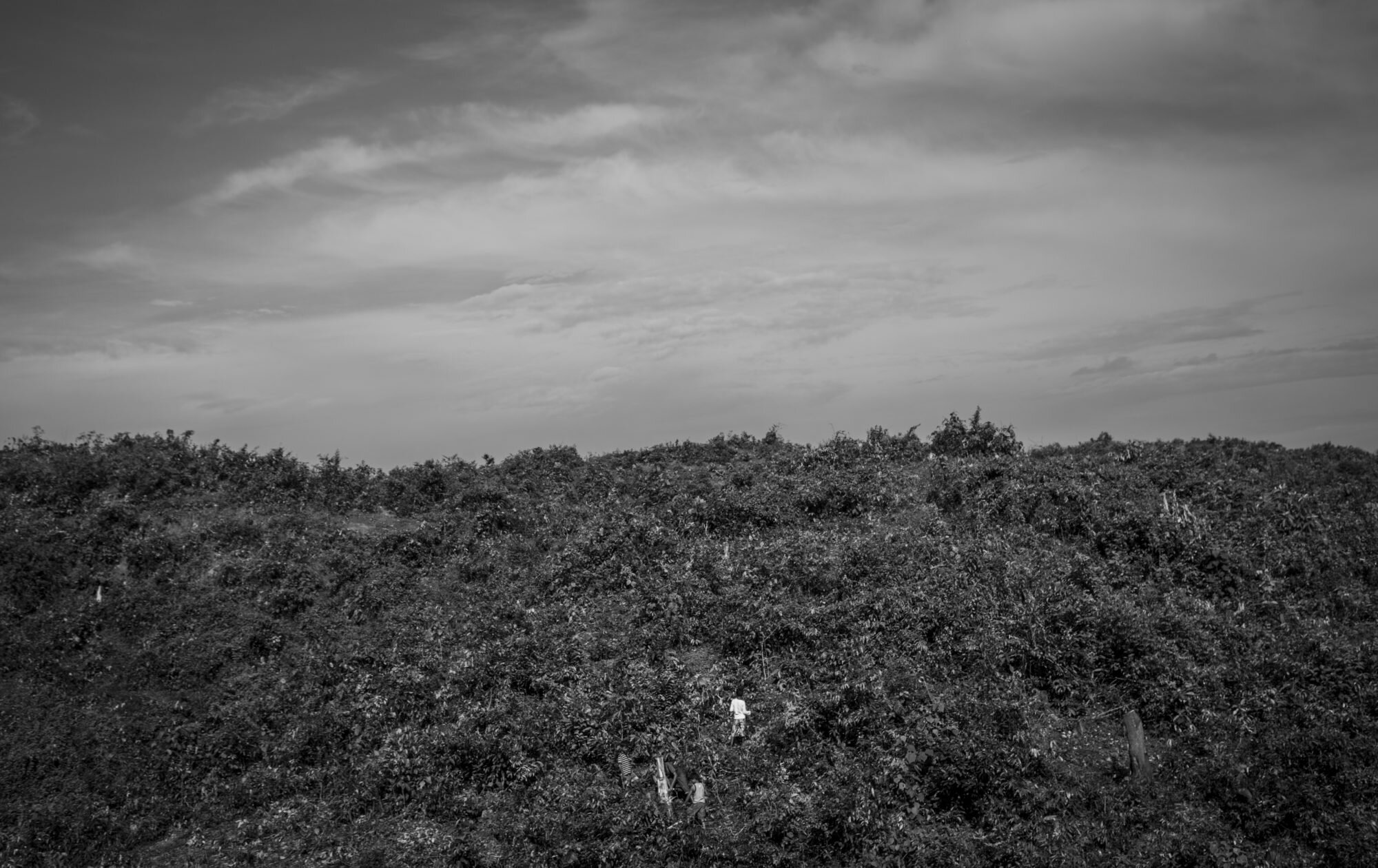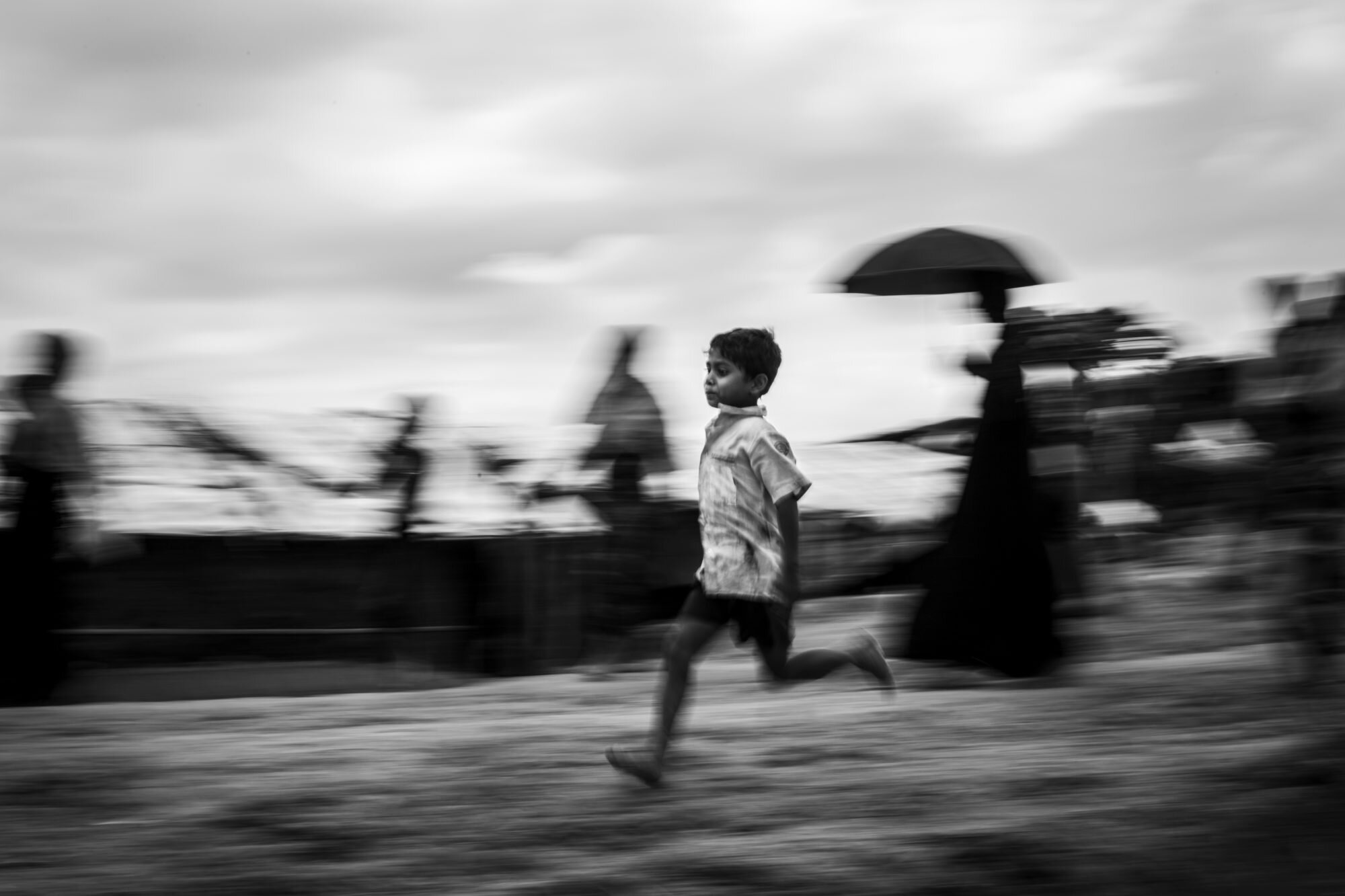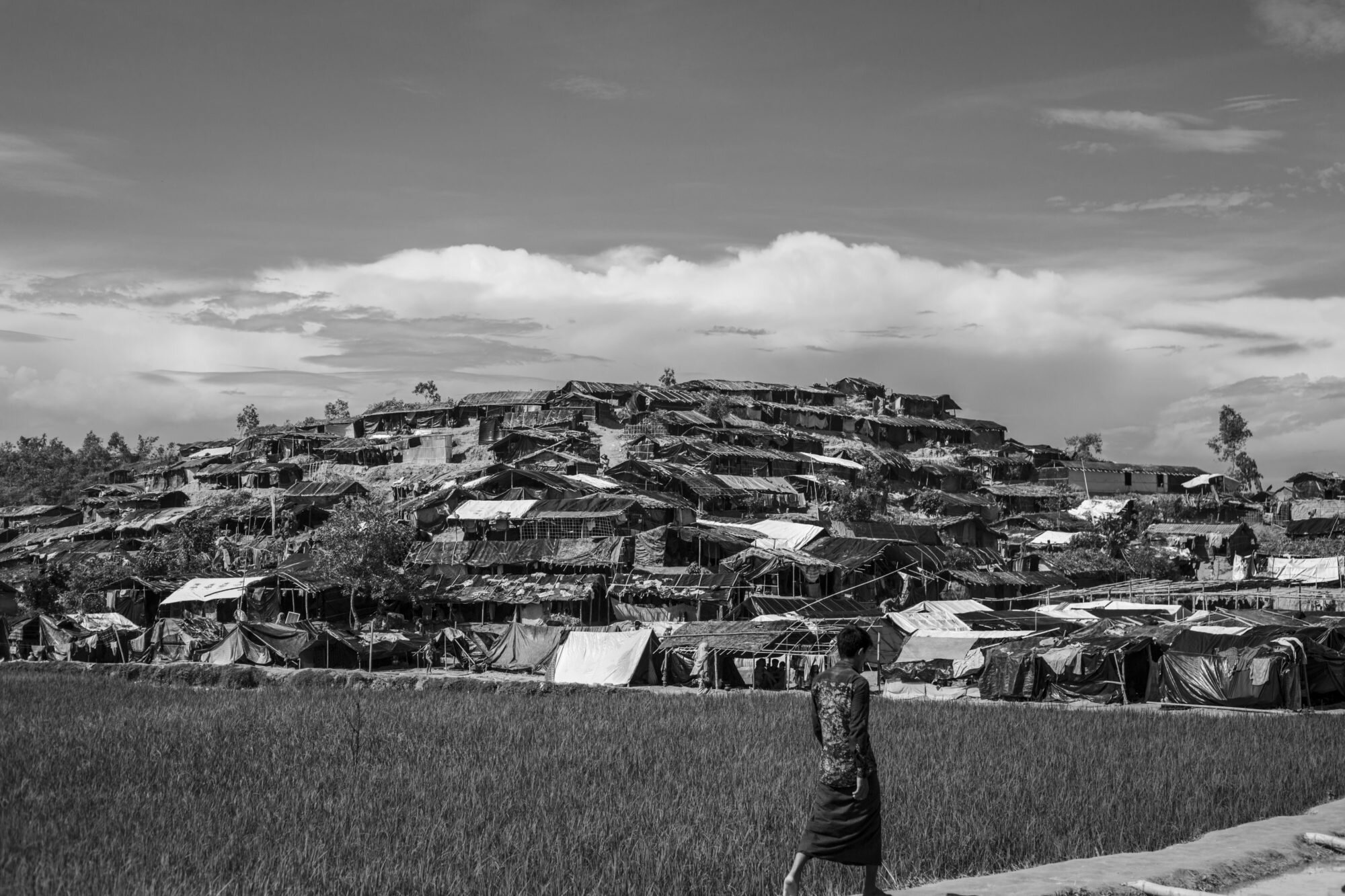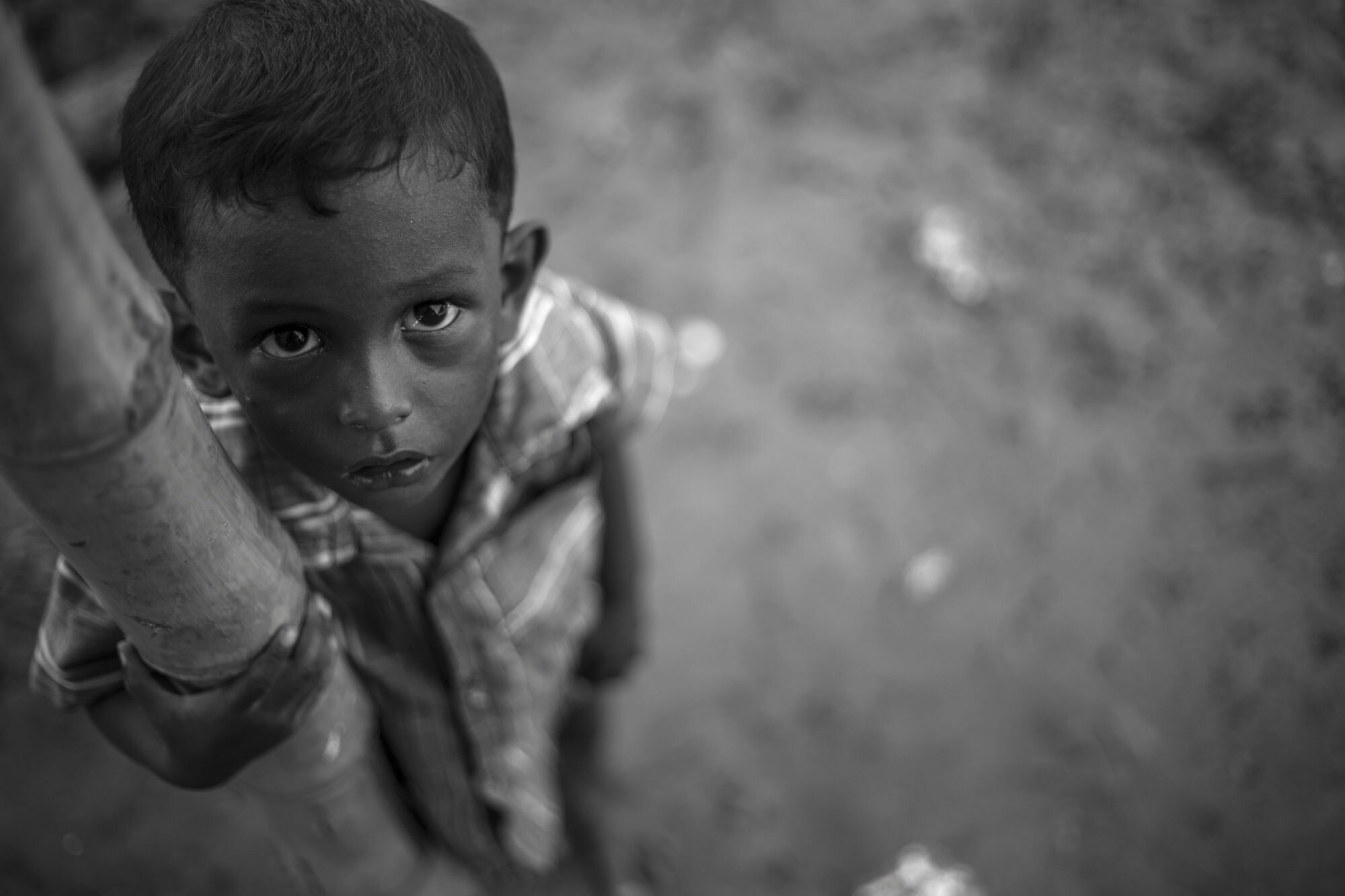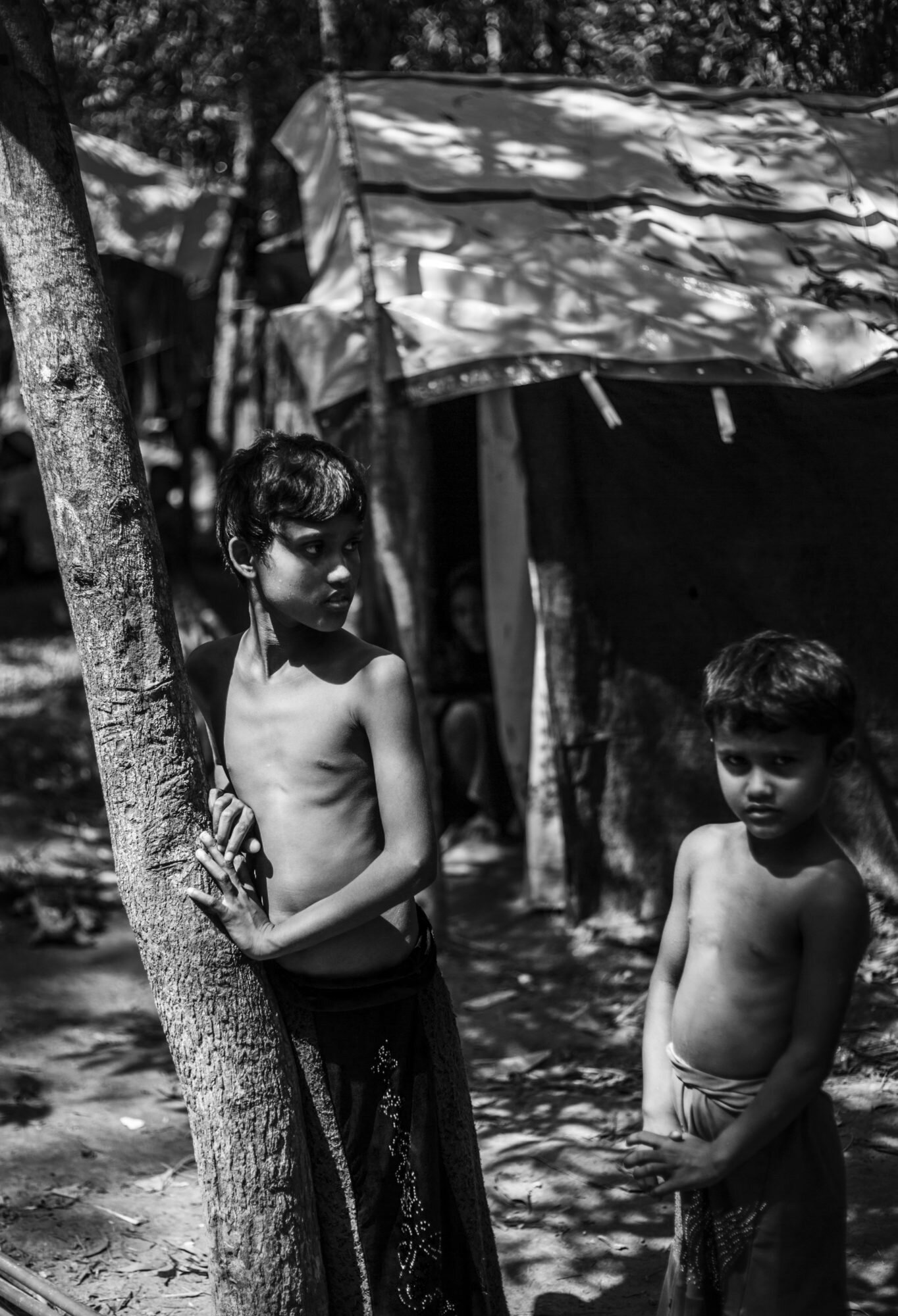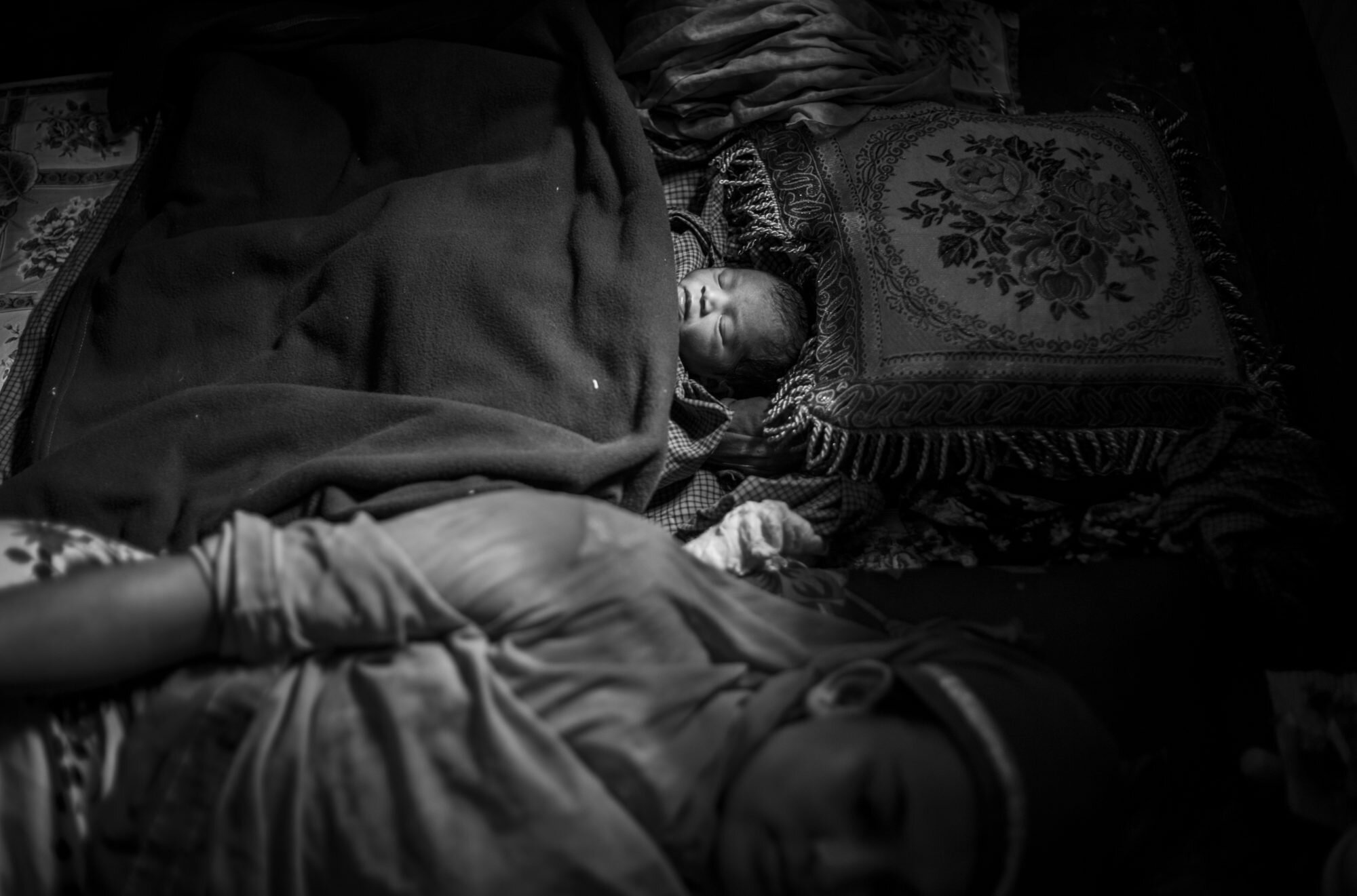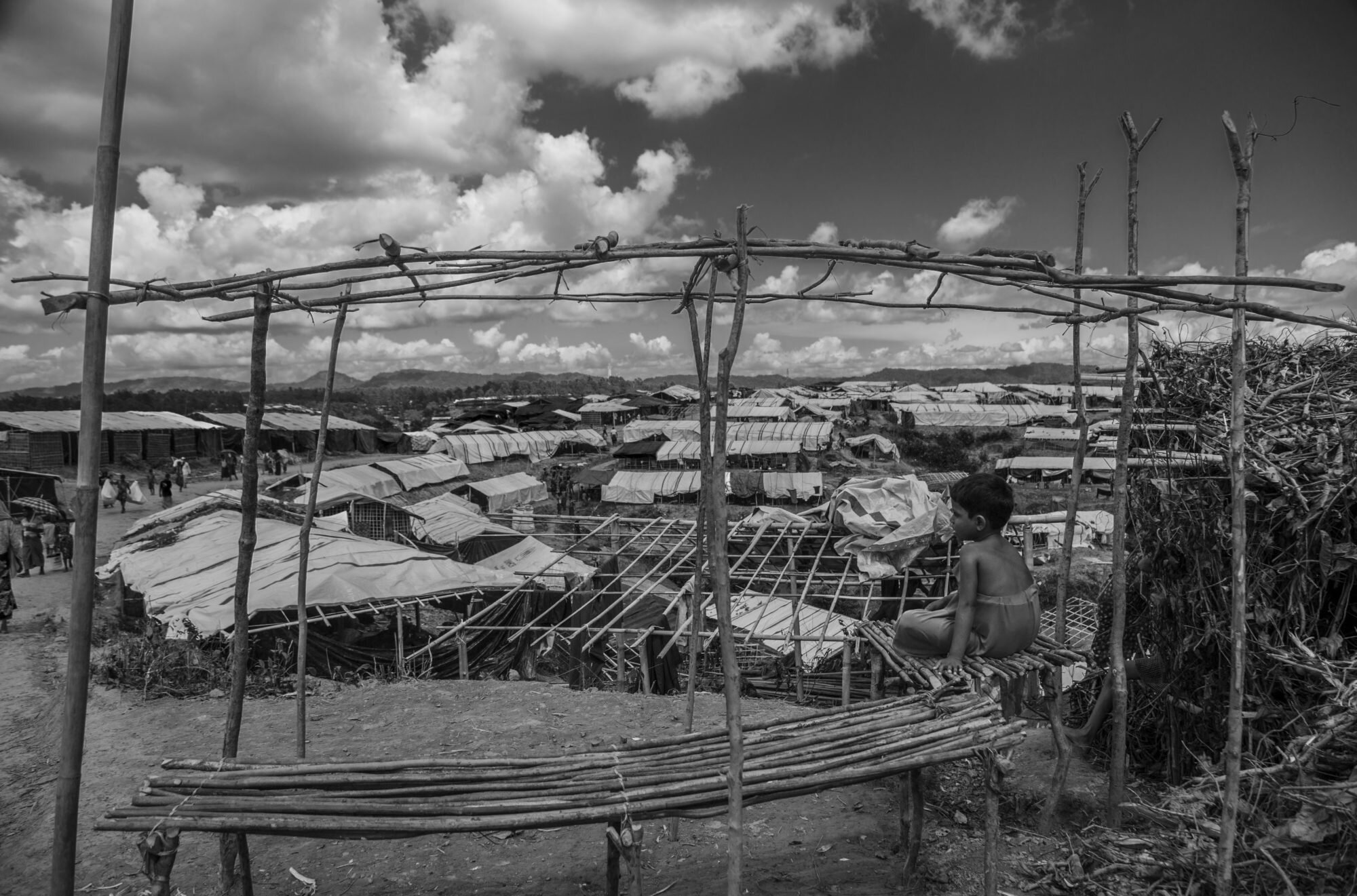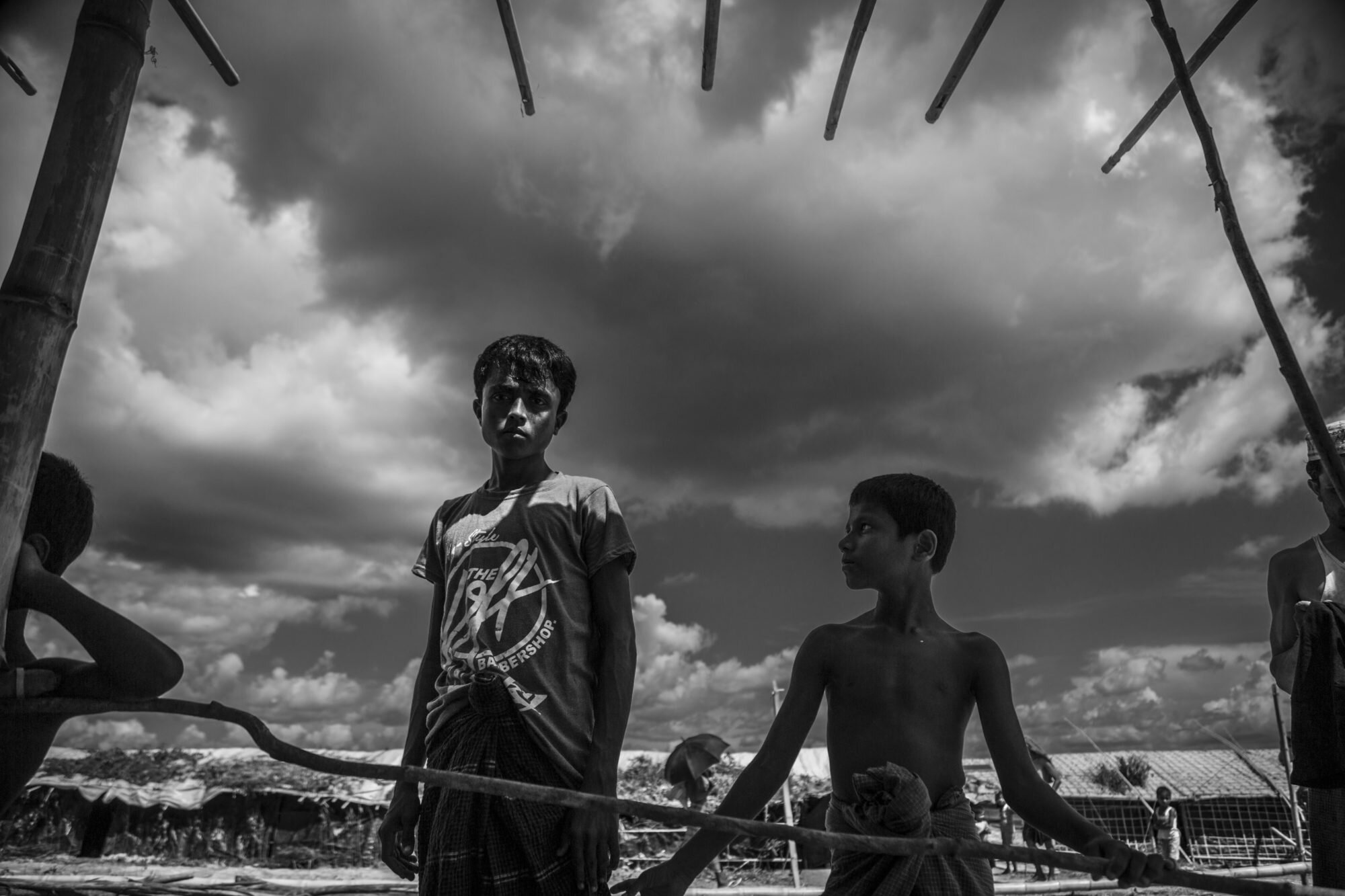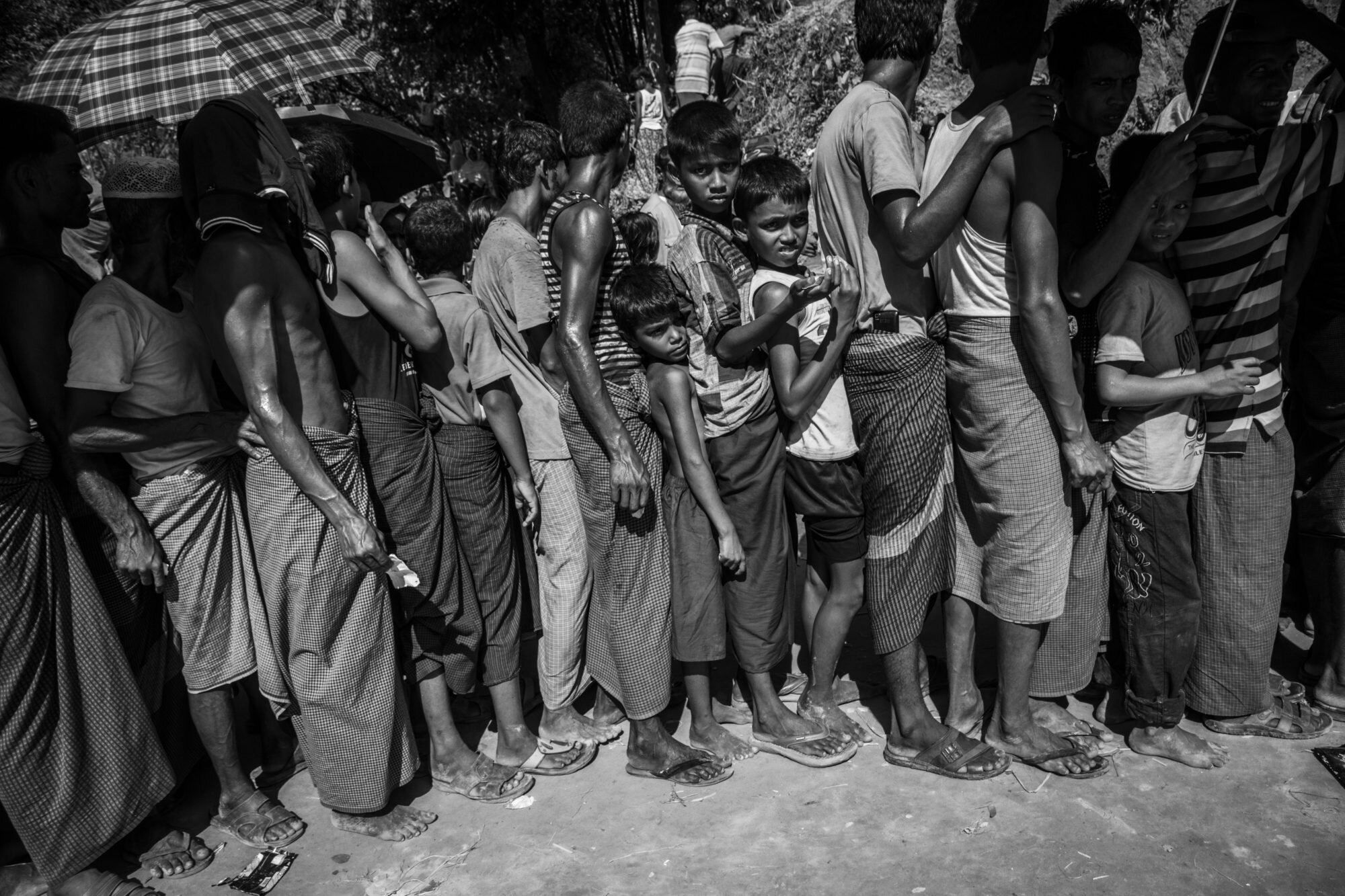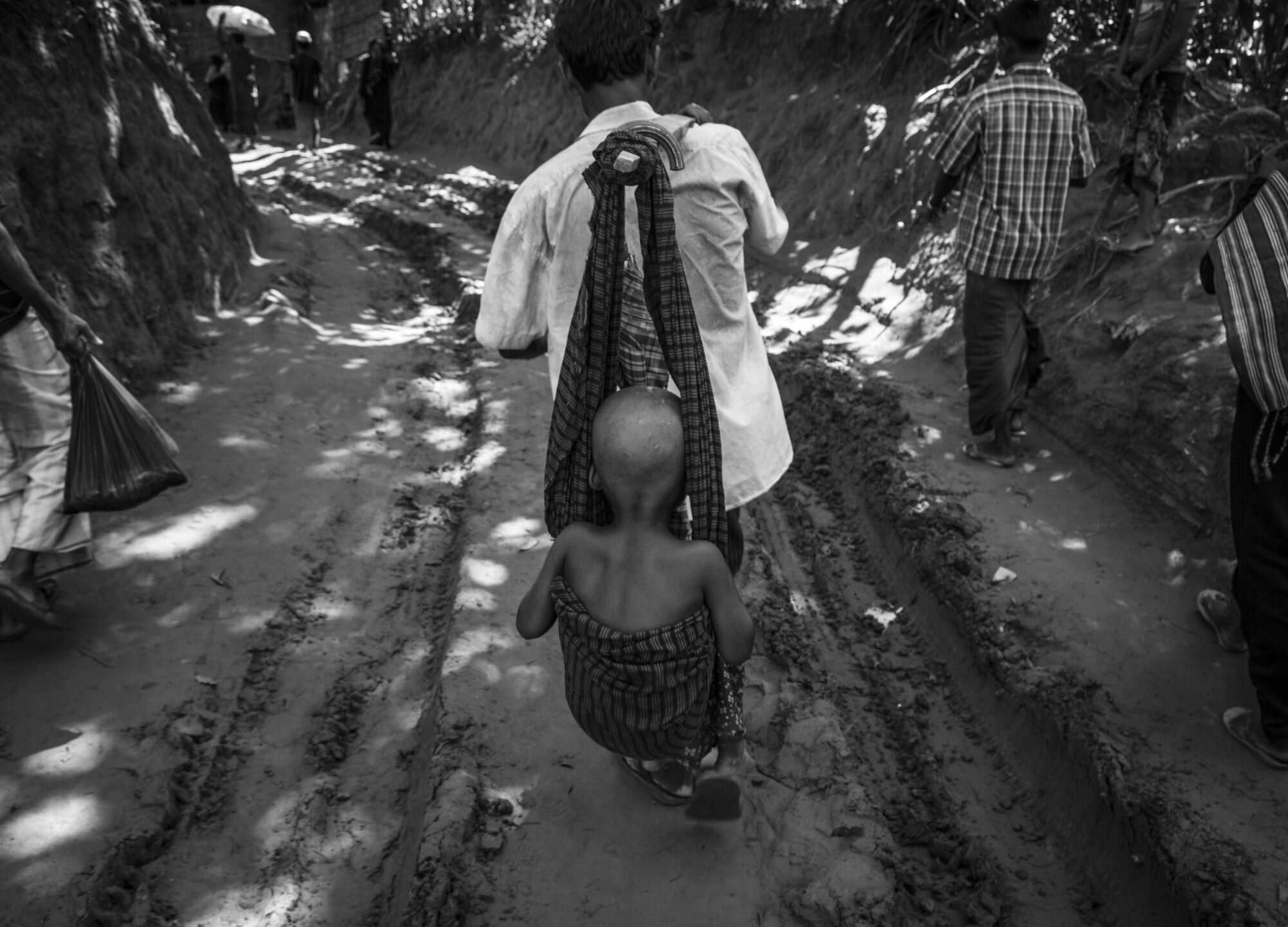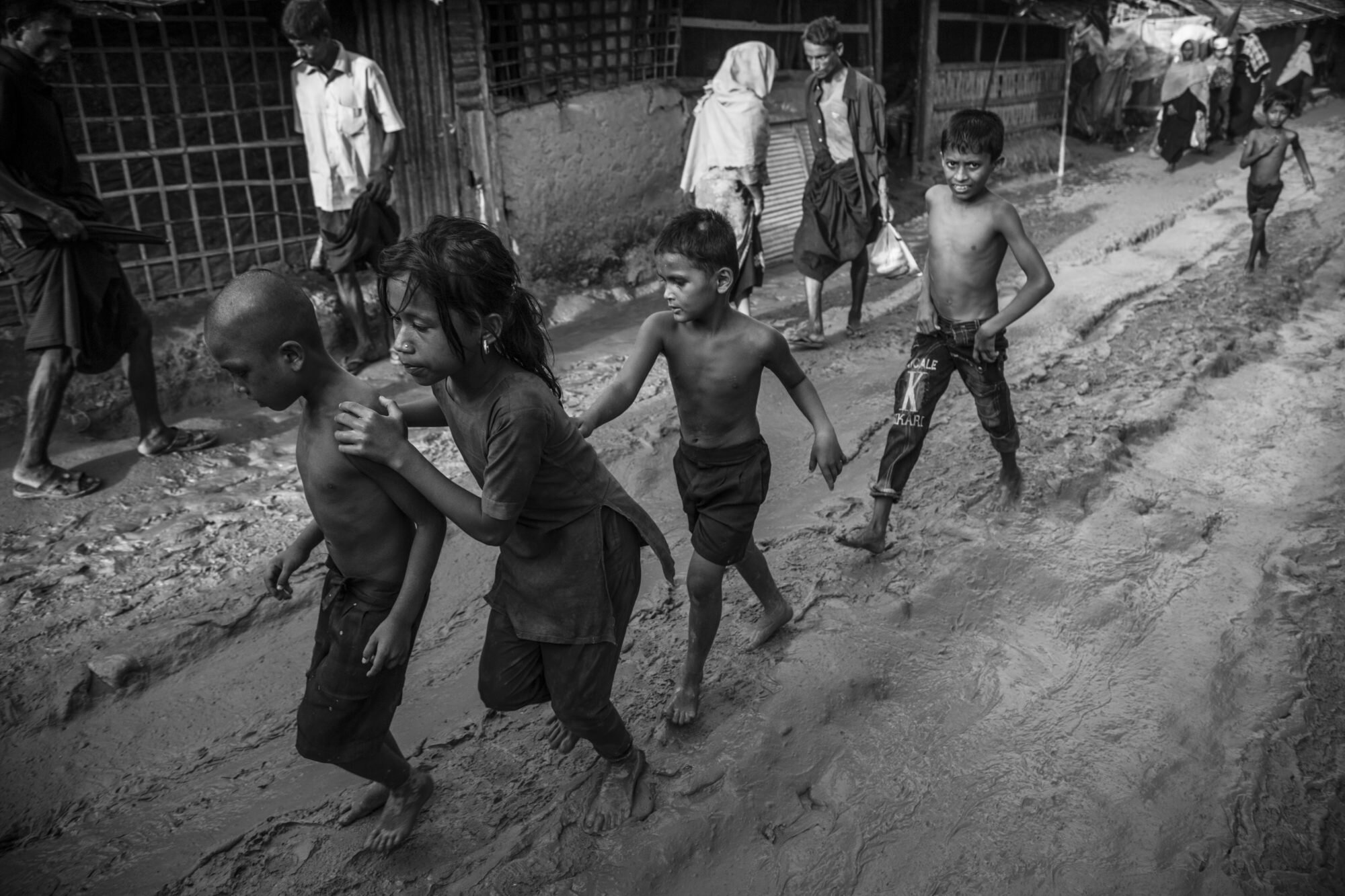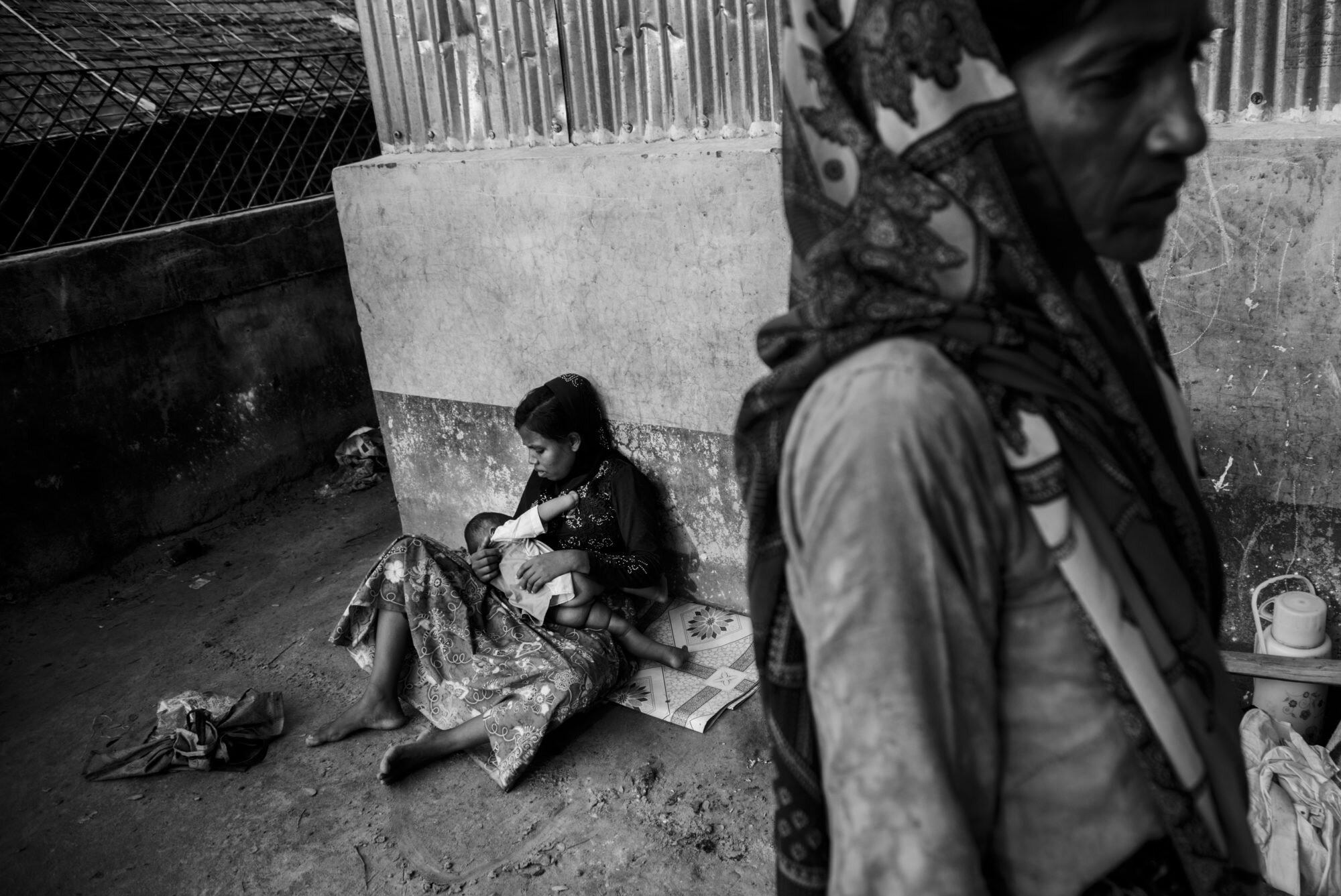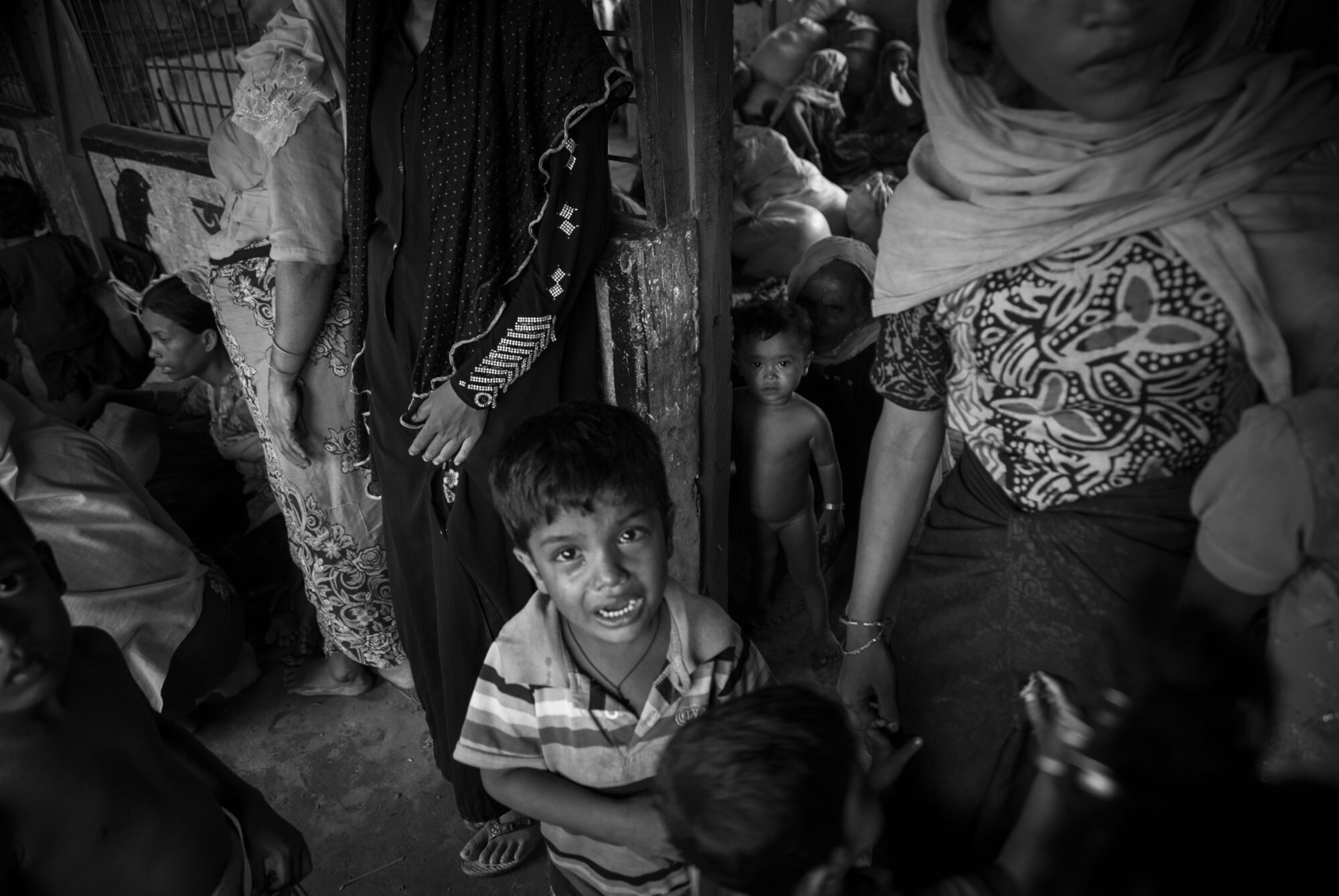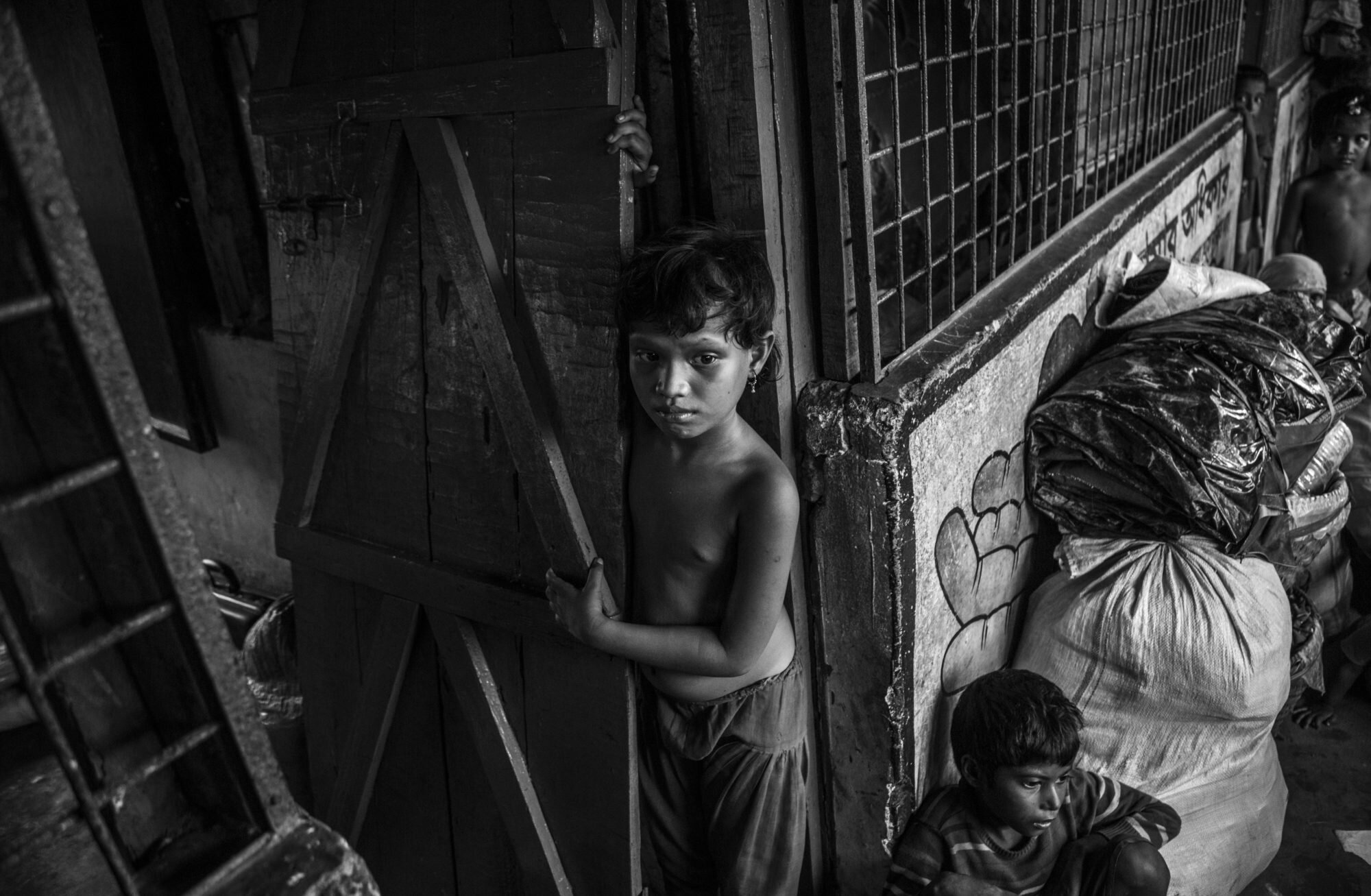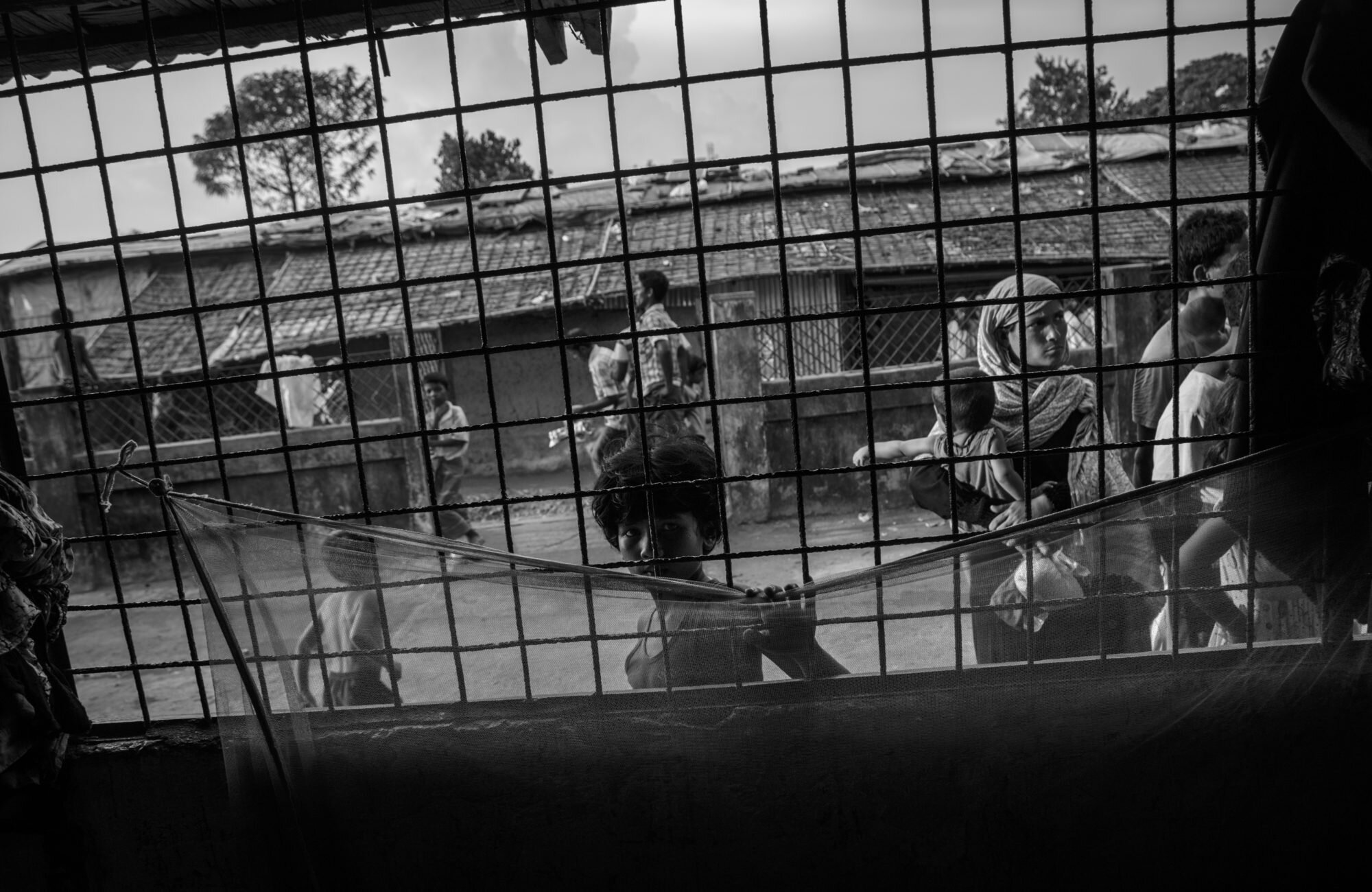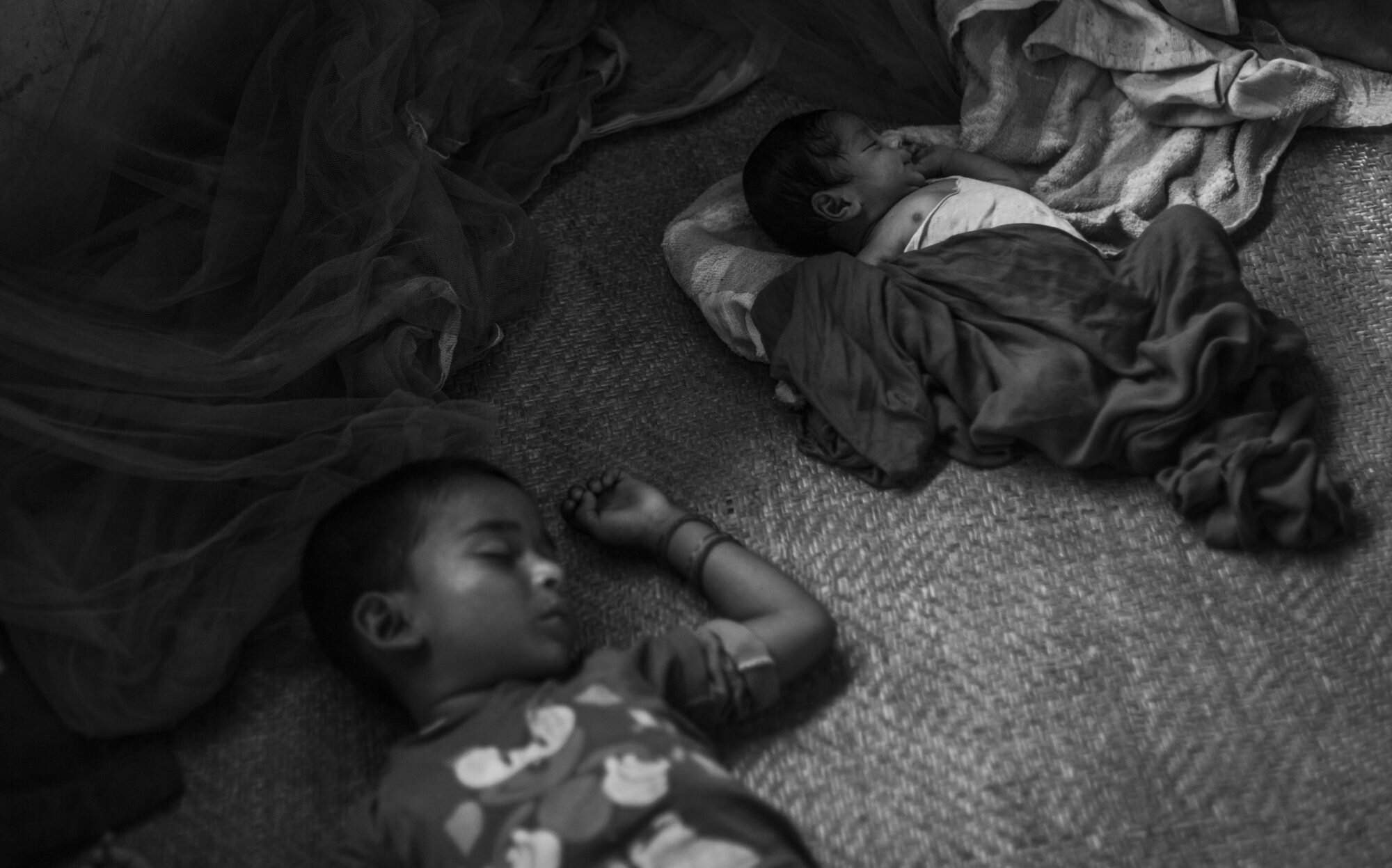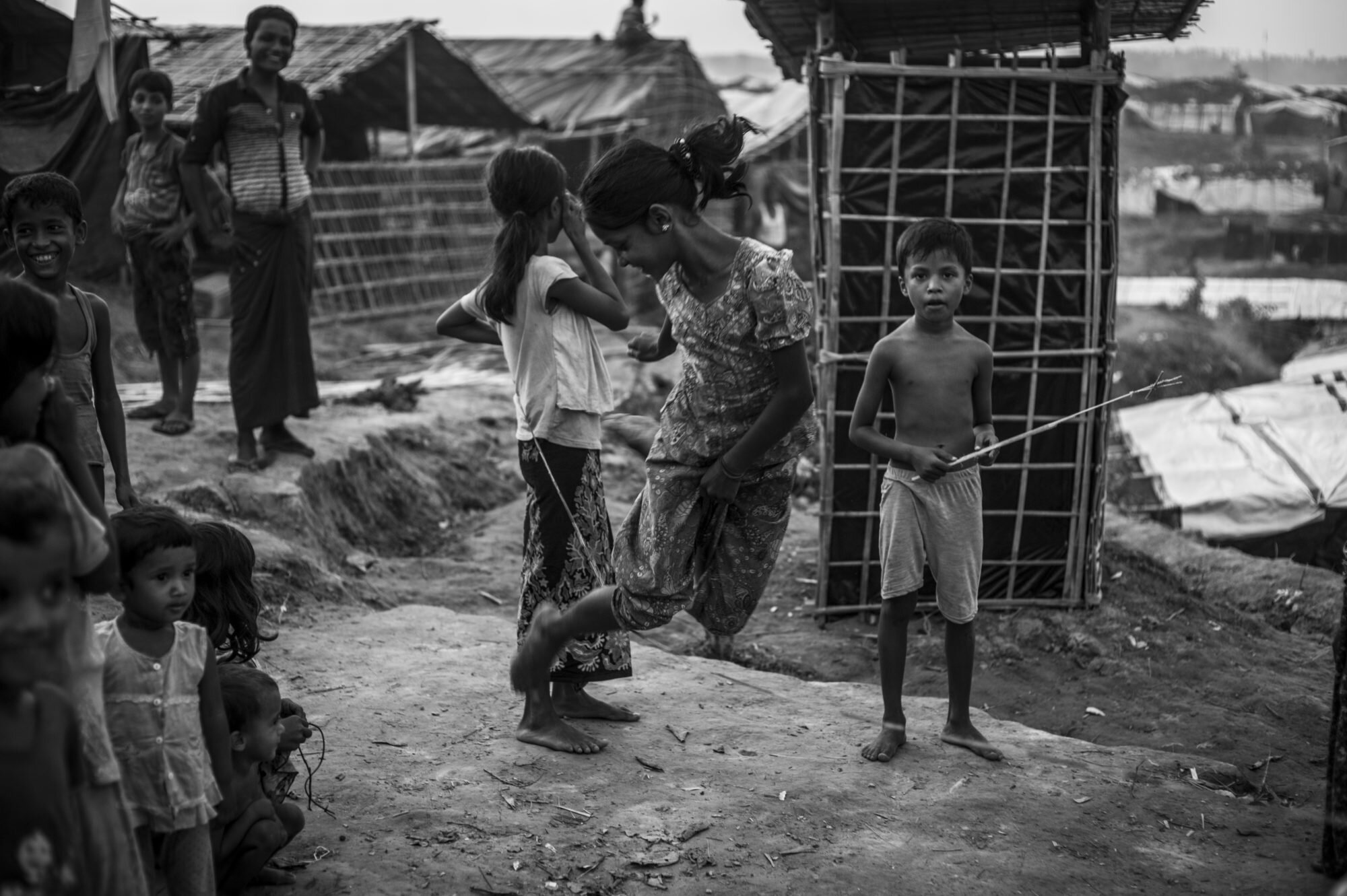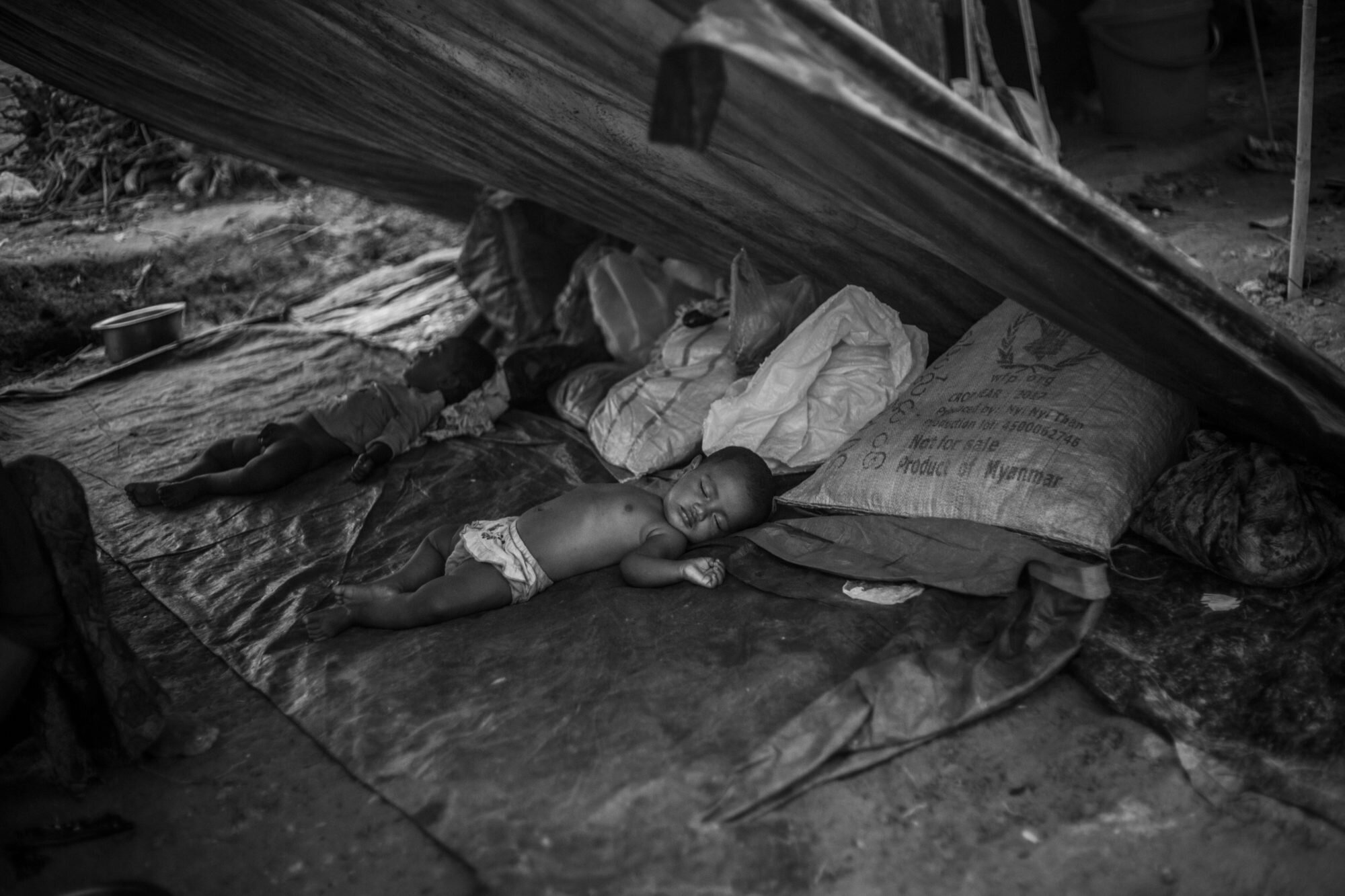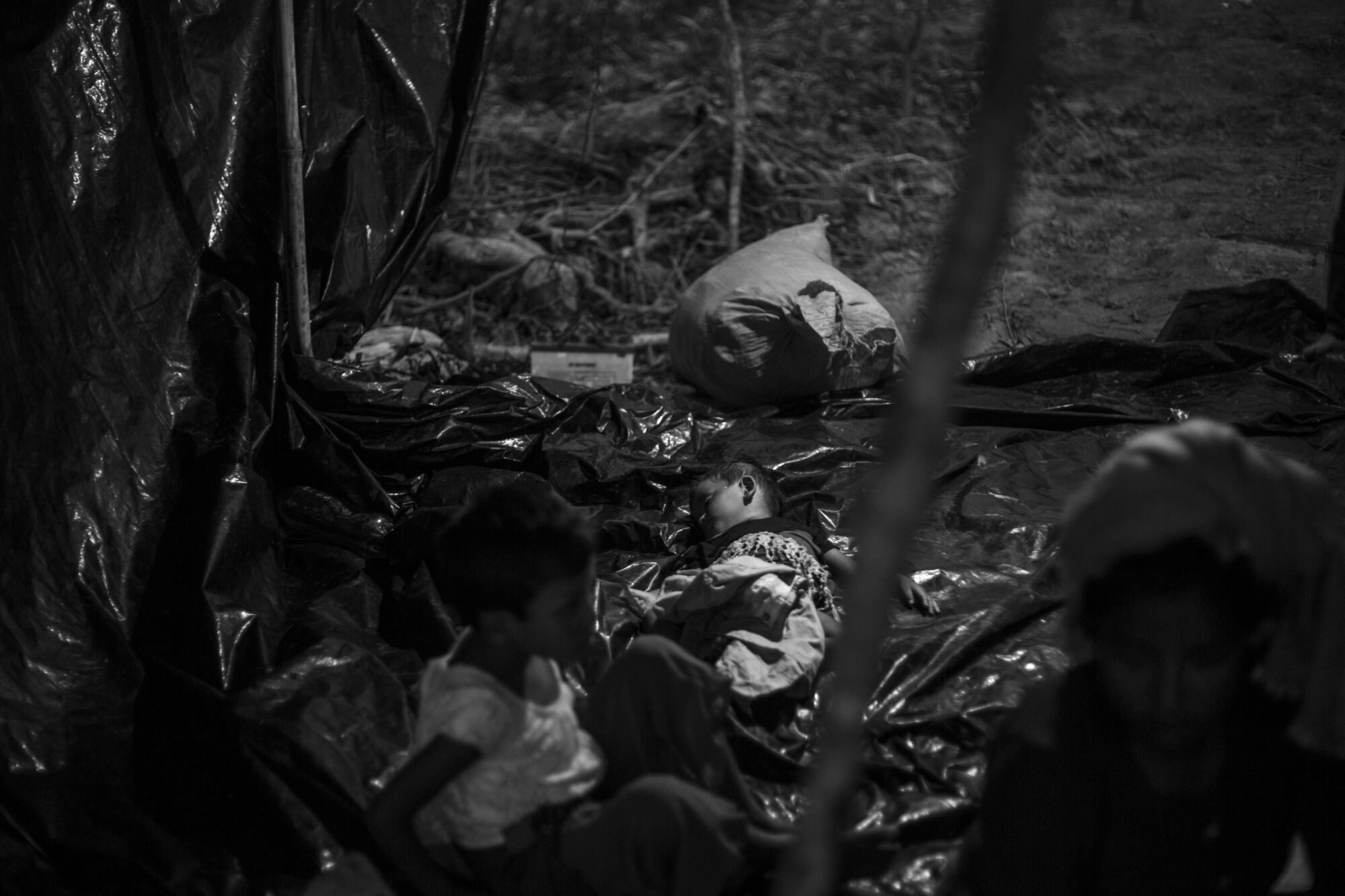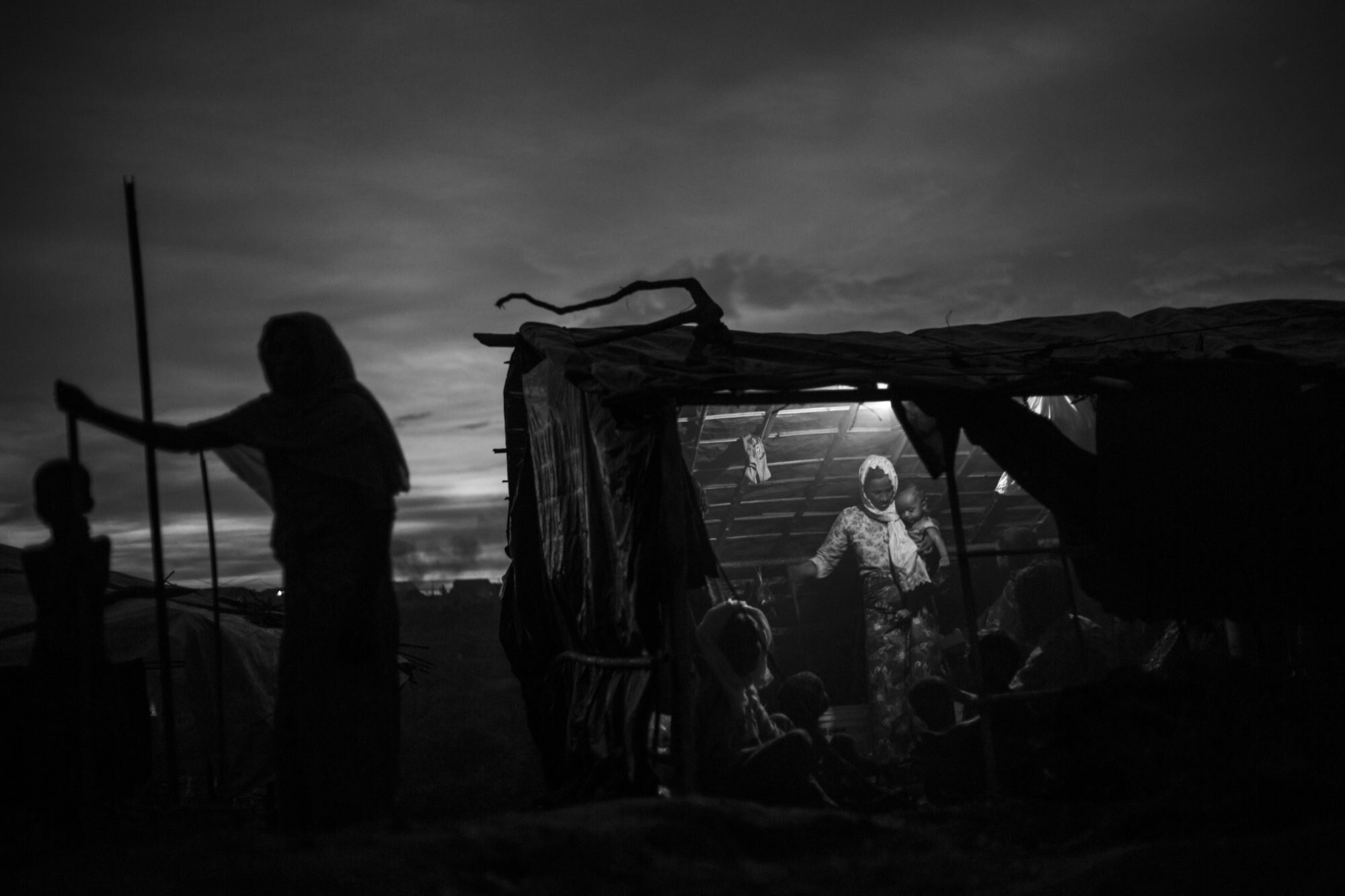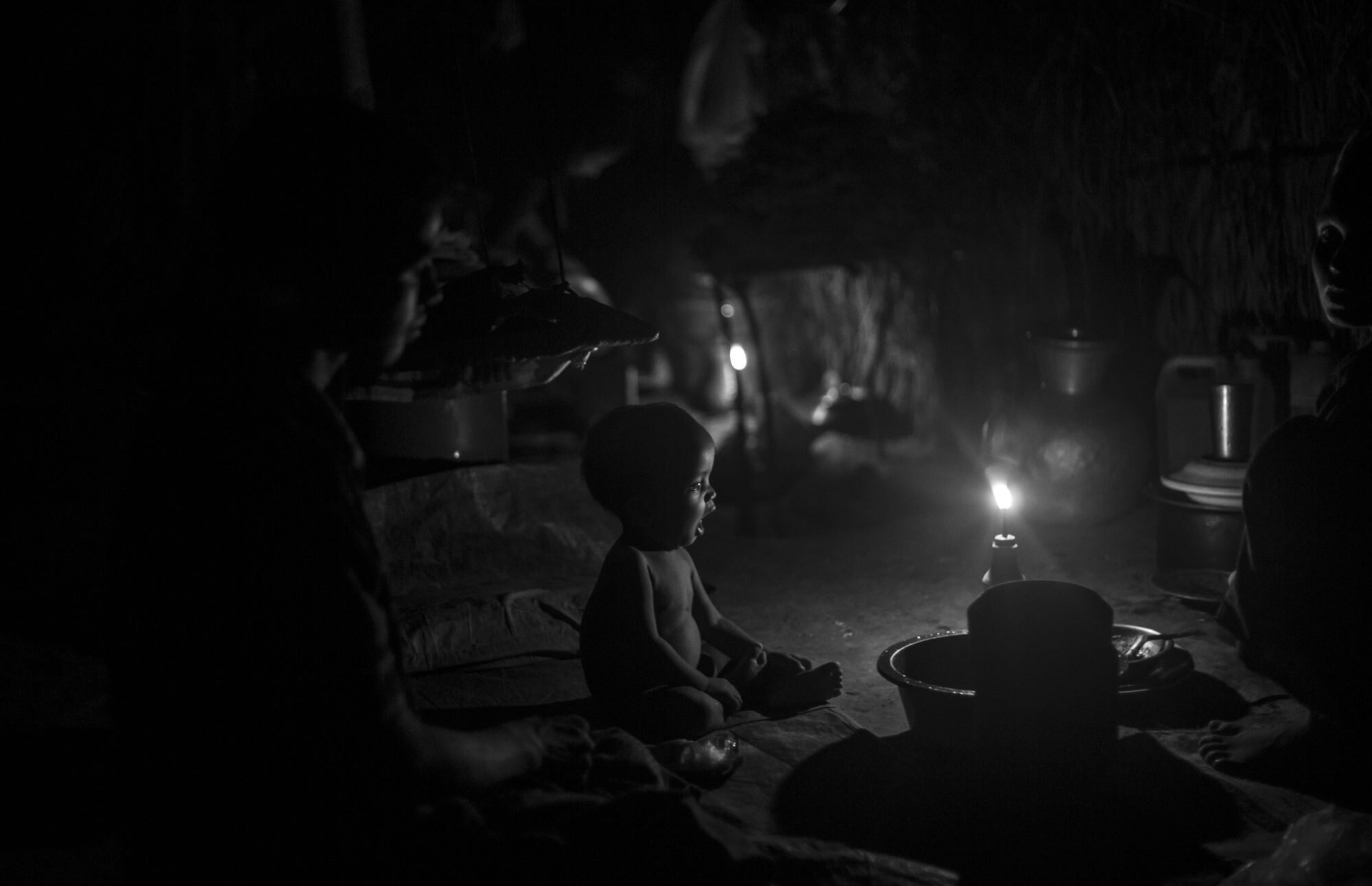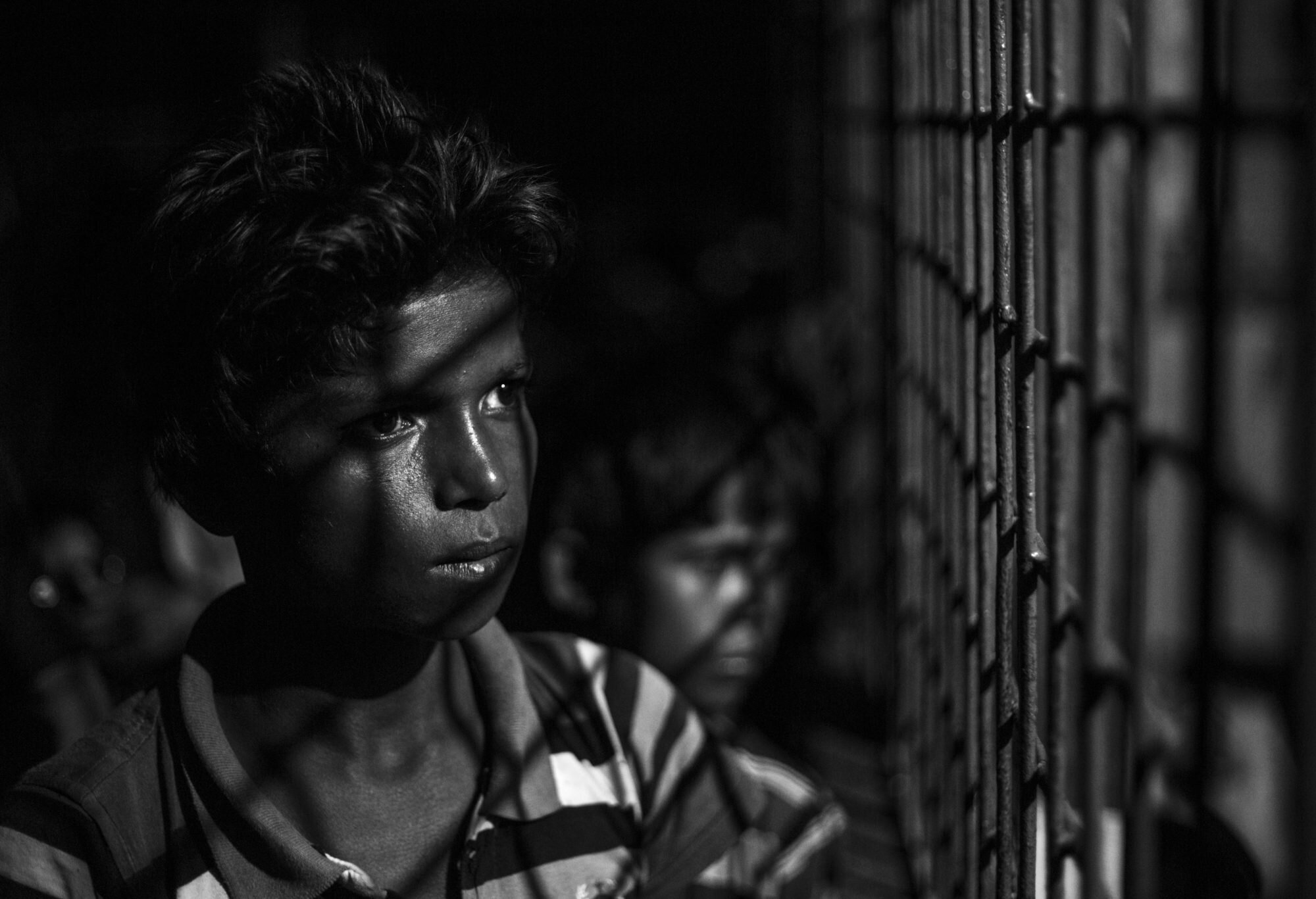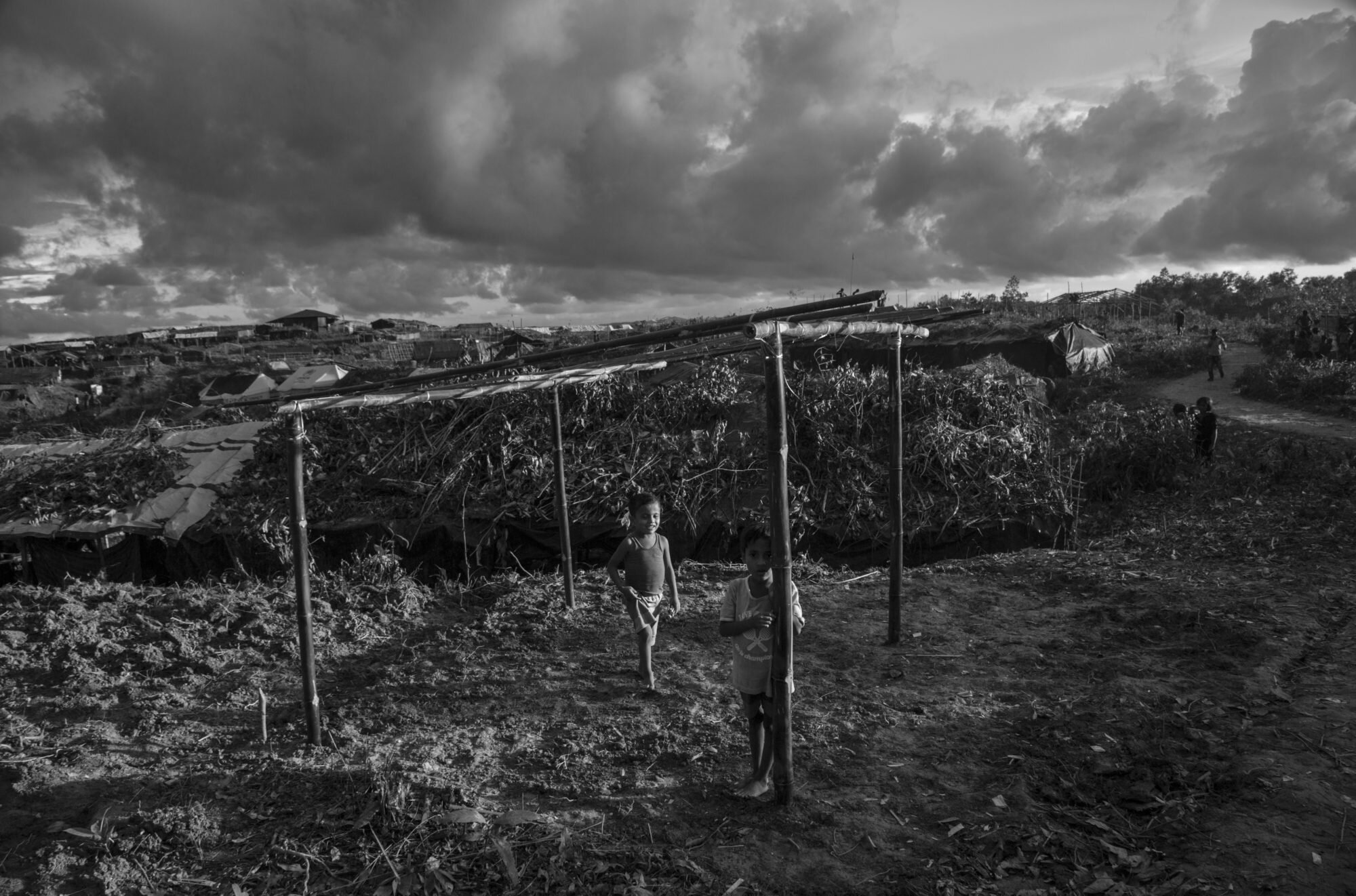A Textbook Example of Ethnic Cleansing: Photographs of the Rohingya in Myanmar
By Ahmer Khan
An estimated 605,000 Rohingya refugees have flooded into Bangladesh to flee an offensive by Myanmar’s military that the United Nations has called the world’s “fastest developing refugee emergency” and a “textbook example of ethnic cleansing.”[1] Of those who have crossed the border – 60 percent are children, according to the (UNICEF).[2] The government of Bangladesh has said it will build 6,000 separate shelters for Rohingya children.[3]
Every day, more Rohingyas are crossing over to Bangladesh and the refugee population is expected to swell further. It is the largest refugee crisis in Asia in decades.
Thousands are said to be stranded at the border crossing while hundreds of others are making the perilous journey on foot towards the border or paying smugglers to take them across in wooden boats.[4] Dozens, mostly children, have perished after their boats capsized on the way to Bangladesh.[5]
The Office of the United Nations High Commissioner for Refugees (UNHCR) released drone footage from October 18, showing thousands of Rohingya Muslims crossing the Nad River into southern Bangladesh.[6] It captures the extent of the exodus with crowds stretching for kilometers.
“Military started firing rockets in our village. We lost four kids in our family. The military has tortured us a lot. They have raped so many of our women in the village,” said Hamida, a thirty-year-old Rohingya woman, in an interview. “Many have disappeared. They butchered young men mercilessly,” she added.
Survivors arrive with horrifying accounts of women raped, villages and people burned, and scores killed in the clearance operations by Myanmar’s army that were sparked by militant attacks on security posts in Rakhine state on August 25, 2017.
Fifty-nine year-old Abdul Rehman arrived from Myanmar in late September after his village was set on fire by the military.
“When my village was burnt down from all the sides, we went and hid in a cave. Later, they set the cave on fire as well. We walked for five days without food to cross the border,” he said.
Myanmar’s State Counsellor, Aung San Suu Kyi, a Nobel Peace Prize laureate who championed democracy, now appears unable or unwilling to stop the army’s brutal crackdown.[7] In Myanmar, the Rohingya are considered illegal immigrants from Bangladesh despite having lived in Myanmar for generations.[8] Most reside in the Western state of Rakhine.
In Kutupalong refugee camp, a local volunteer group of Bangladeshis have started a makeshift hospital inside a house with volunteer doctors.
“We have opened this free medical camp here for all the Rohingya refugees, especially pregnant women. By God’s grace, we have treated a lot of people here, including kids and women. We are really happy that five kids were born in this medical camp,” the group’s leader, Farid-ud-Din, said in an interview.
Inside the improvised hospital, the living room has become a delivery room and the muddy front yard a pharmacy. Outside, thousands of sick and injured refugees receive free treatment and medicine.
“Our doctors are doing a great job. After a few days, we will move this camp to another area, to treat more Rohingya refugees,” Farid-ud-Din added.
In a statement on October 17, 2017, Human Rights Watch said newly released satellite images reveal that at least 288 villages were partially or totally destroyed by fire in northern Rakhine State since August 25, 2017. The destruction encompassed tens of thousands of structures, primarily homes inhabited by ethnic Rohingya Muslims.[9]
Even though half a million refugees have already crossed over into Bangladesh, satellite imagery shows thousands of Rohingya are still in the Rakhine state, though some who remain have left their homes and fled to the surrounding hills. [10]
One of the world’s most densely populated and poorest countries, Bangladesh, has already provided a massive amount of aid to Rohingya refugees through the central government, the army and the civil society.
An unnamed Rohingya Muslim man from the Kutupalong refugee camp in Cox’s Bazar indicated that the Rohingyas are trapped and have no shelter. Said the man, “We will starve to death very soon. We have no food, no shelter and no money. Please help us.”
Photo Captions:
18 year-old Yasmin cries at her makeshift shelter in the Kutupalong refugee camp in Cox’s Bazar. Yasmin’s family including her father, mother, and two brothers was burnt alive by the Myanmar army. She was taken away by her uncle when they fled to Bangladesh.
A Rohingya refugee mother looks at her newborn baby in the Balukhali refugee camp in Cox’s Bazar.
A Rohingya baby plays in rain water while his mother washes clothes in Balukhali refugee camp.
A Rohingya baby cries outside her makeshift tent in Balukhali refugee camp. This baby had suffered eye injuries due to tear-gas shells when her village was burnt down in Rakine state.
A Rohingya Muslim girl falls unconscious while on her way back to her camp.
Maryam Zeyna, a Rohingya mother, breastfeeds her baby outside a makeshift camp at Kutupalong refugee camp.
Rohingya children collect wood at the Thankhali refugee camp in Cox’s Bazar.
Rohingya refugee women hold their babies in the Palongkali refugee camp in Cox’s Bazar.
A Rohingya refugee boy runs toward his makeshift tent at the Thankhali refugee camp in Cox’s Bazar.
A young Rohingya refugee walks past the Teknaf refugee camp in Cox’s Bazar.
A Rohingya refugee child gazing out at Palongkali refugee camp
Rohingya refugee children stand near a tree outside a makeshift tent in Palongkali refugee camp.
A baby being born in a makeshift hospital in Kutupalong refugee camp. A local volunteer group had organized the house as a site for provision of medical services, and a few deliveries have taken place so far. In the improvised hospital, the living room had been turned into a delivery room, and the muddy front yard into a pharmacy.
A young refugee looks out upon Kutupalong refugee camp.
A young Rohingya refugee looks out near the temporary mosque built by the Rohingyas in the Kutupalong refugee camp.
Rohingya refugees line up for food aid at a distribution point at the Balukhali refugee camp.
A Rohingya father carries his child as he arrives after crossing the Naf River in Cox’s Bazar.
Rohingya children walk barefoot on the muddy way at Kutupalong refugee camp.
A new arrival breastfeeds her baby in a school being used as a temporary camp.
Rohingya Muslim women and kids sitting in a school housing new refugees from Myanmar in Kutupalong refugee camp.
A Rohingya refugee stands near the school door housing newly arrived refugees from Myanmar in Kutupalong refugee camp.
A Rohingya refugee girl in a school housing new refugees from Myanmar in Kutupalong refugee camp.
Rohingya children sleep in a school housing newly arrived refugees from Myanmar in Kutupalong refugee camp.
Rohingya refugee children play in Kutupalong refugee camp.
Rohingya refugee children sleep in their makeshift tent at Thankhali refugee camp.
One year-old Dilkayas sleeps in a makeshift tent at Kutupalong refugee camp.
A Rohingya mother holds her baby inside a makeshift tent at Kutupalong refugee camp.
A Rohingya family sits in a makeshift shelter at Kutupalong refugee camp.
Twelve year-old Abdul Rehman looks out through a school window housing newly arrived refugees in Kutupalong refugee.
Rohingya children pictured in Kutupalong refugee camp.
About the Author
Ahmer Khan is an independent documentary photographer and a radio journalist based in Indian-administered Kashmir focusing South Asia. His work has been published in BBC, AlJazeera, The Guardian, Carnegie Council, The Christian Science Monitor, Getty Images, Foreign Policy, Vice, BuzzFeed, The Diplomat, and many other publications. He is the correspondent for Radio France International covering south Asia. Follow him on Twitter: @ahmermkhan.

